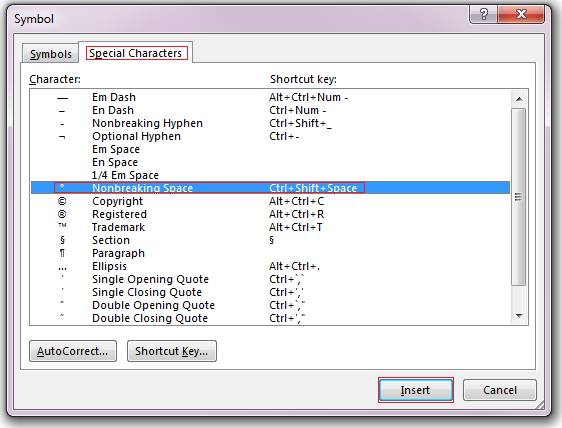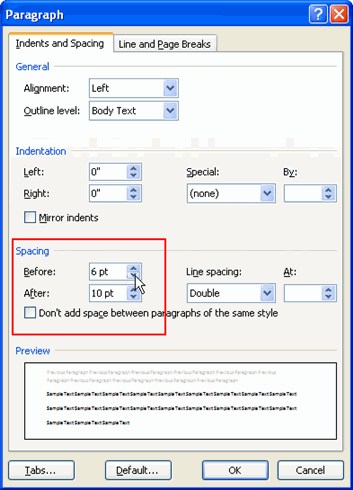

- #NON BREAKING SPACE WORD 2007 DRIVERS#
- #NON BREAKING SPACE WORD 2007 SOFTWARE#
- #NON BREAKING SPACE WORD 2007 CODE#
Drafts of the Finnish multilingual keyboard.Private moduleHandle As IntPtr = IntPtr.Zero

Die englische Schreibweise sieht keine Abstände zwischen einzelnen Buchstaben vor. Alle Abkürzungen mit Binnenpunkten werden im Deutschen mit einem gFL spationiert. Hochschule für Technik, Wirtschaft und Kultur Leipzig. "Zweisprachige Mikrotypografie" (PDF) (in German).
#NON BREAKING SPACE WORD 2007 CODE#
REGISTRY, Graphic Character Sets and Code Pages. (Non-breaking space has code point 255 decimal ( FF hex) in codepage 437 and codepage 850 and code point 160 decimal ( A0 hex) in codepage 1252.) For example:Īlt+ 0 1 6 0 or Alt+ 2 5 5 (doesn't always work)Ĭtrl+ K, Space, Space or Ctrl+ K, ⇧ Shift+ N, ⇧ Shift+ Sĭreamweaver, LibreOffice, Microsoft Word, (since 3.0), AutoCADįrameMaker, LyX (non-Mac), (before 3.0), WordPerfectĪpart from this, applications and environments often have methods of entering unicode entities directly via their code point, e.g.
#NON BREAKING SPACE WORD 2007 DRIVERS#
Typically, authors of keyboard drivers and application programs (e.g., word processors) have devised their own keyboard shortcuts for the non-breaking space. According to the SFS setting, the non-breaking space can be entered with the key combination AltGr + Space. An exception is the Finnish multilingual keyboard, accepted as the national standard SFS 5966 in 2008. It is rare for national or international standards on keyboard layouts to define an input method for the non-breaking space. The word-joiner does not produce any space and prohibits a line break at its position. WJ) Encoded in Unicode since version 3.2.U+2007 FIGURE SPACE ( ) Produces a space equal to the figure (0–9) characters. Also starting from release 34 of Unicode Common Locale Data Repository (CLDR) the NNBSP is used in numbers as thousands group separator for French and Spanish locale. When used with Mongolian, its width is usually one third of the normal space in other contexts, its width is about 70% of the normal space but may resemble that of the thin space (U+2009), at least with some fonts. It is also required for big punctuation in French where it is called espace fine insécable and sometimes inaccurately referred to as "double punctuation" (before, ?, !, », › and after «, ‹ today often also before :), in Russian (before em dash ), and in German between multi-part abbreviations (e.g. U+202F NARROW NO-BREAK SPACE ( NNBSP) It was introduced in Unicode 3.0 for Mongolian, to separate a suffix from the word stem without indicating a word boundary. Other non-breaking variants, defined in Unicode:

Conversely, indiscriminate use (see the recommended use in style guides), in addition to a normal space, gives extraneous space in the output.

In contrast, non-breaking spaces are not merged with neighboring whitespace characters when displayed and can therefore be used by an author to simply insert additional visible space in the resulting output without using spans styled with peculiar values of the CSS "white-space" property. Such "collapsing" of whitespace allows the author to neatly arrange the source text using line breaks, indentation and other forms of spacing without affecting the final typeset result. This guarantees that the text "100 km" will not be broken: if it does not fit at the end of a line, it is moved in its entirety to the next line.Ī second common application of non-breaking spaces is in plain text file formats such as SGML, HTML, TeX and LaTeX, whose rendering engines are programmed to treat sequences of whitespace characters (space, newline, tab, form feed, etc.) as if they were a single character (but this behavior can be overridden). An editor who finds this behavior undesirable may choose to use a non-breaking space between "100" and "km".
#NON BREAKING SPACE WORD 2007 SOFTWARE#
For example, if the text "100 km" will not quite fit at the end of a line, the software may insert a line break between "100" and "km". Text-processing software typically assumes that an automatic line break may be inserted anywhere a space character occurs a non-breaking space prevents this from happening (provided the software recognizes the character). Despite having layout and uses similar to those of whitespace, it differs in contextual behavior.


 0 kommentar(er)
0 kommentar(er)
